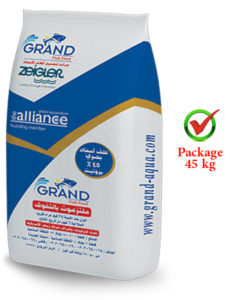Table 1: Daily feeding rates (% of body weight) for Nile Tilapia from 0.5 to 400 grams at varies water temperatures
| Body weight (grams) | Water Temperature | |||
| 18 | 23 | 26 | 30 | |
| Tilapia Feed (36% crude protein) | ||||
| <0,5 | 4 | 8 | 12 | 15 |
| 0,5 – 0,75 | 3,5 | 7 | 12 | 13 |
| 0,75 – 1 | 3 | 6 | 8 | 10 |
| Tilapia Feed (32% crude protein) | ||||
| 10 -15 | 2 | 3 | 4,25 | 4,5 |
| 15 – 20 | 2 | 2,75 | 4 | 4,25 |
| 20 – 30 | 1,75 | 2,75 | 3,75 | 4 |
| 30 – 40 | 1,75 | 2,75 | 3,5 | 3,75 |
| 40 – 50 | 1,75 | 2,75 | 3,25 | 3,5 |
| Tilapia Feed (30% crude protein) | ||||
| 50 100 | 1,5 | 2,5 | 2,75 | 3 |
| 100 – 200 | 1,5 | 2,25 | 2,5 | 2,75 |
| 200 – 300 | 1,25 | 2 | 2,5 | 2,75 |
| 300 – 400 | 1,25 | 2 | 2,25 | 2,5 |
| >400 | 1 | 1,5 | 1,75 | 2 |
| Tilapia Feed (27% crude protein) | ||||
| 300-400 g | ||||
| Tilapia Feed (25% crude protein) >400 g |
||||
Table 2: Daily feeding rates (% of body weight) for Sea bass and Sea bream from 0.3 to > 400 grams at varies water temperatures
| Protein (%) |
fat (%) |
Energy (Kcal/Kg feed) |
Pellet size (mm) | Body weight (gram) | Water temperature | ||||||||
| 12 | 14 | 16 | 18 | 20 | 22 | 24 | 26 | 28 | |||||
| 62 | 14 | 4100 | 80 – 400 microns | 0.3-0.6 | 1.4 | 1.8 | 2.3 | 3 | 3.7 | 4.6 | 5.3 | 5.1 | 4.5 |
| 62 | 14 | 4100 | 350 – 900 microns | 0.5-6 | 1.2 | 1.6 | 2 | 2.6 | 3.1 | 3.9 | 4.9 | 4.5 | 4 |
| 53 | 16 | 3900 | 1,5 | 2-8 | 1 | 1.4 | 1.8 | 2.1 | 2.9 | 3.4 | 4 | 3.8 | 3 |
| 52 | 18 | 4000 | 2 | 8-30 | 0.7 | 1.2 | 1.5 | 1.9 | 2.6 | 3.2 | 3.7 | 3.4 | 2.6 |
| 48 | 18 | 3930 | 3 | 30-60 | 0.6 | 1 | 1.3 | 1.6 | 2 | 2.5 | 3.2 | 3 | 2.2 |
| 45-44 | 16 – 18 | 3650-3750 | 4 | 60-100 | 0.5 | 0.8 | 1 | 1.3 | 1.6 | 2 | 2.3 | 2.0 | 1.6 |
| 40-44 | 16 – 18 | 3650-3750 | 5 | 100-230 | 0.4 | 0.6 | 0.8 | 1 | 1.3 | 1.7 | 1.9 | 1.7 | 1.3 |
| 40-44 | 16 – 18 | 3650-3750 | 6-7 | 230-400 | 0.2 | 0.4 | 0.6 | 0.8 | 1 | 1.4 | 1.5 | 1.4 | 1 |
| 40-44 | 16 – 18 | 3650-3750 | 9 | >400 | 0.1 | 0.2 | 0.3 | 0.6 | 0.8 | 1 | 1.2 | 1 | 0.8 |
• Previous feeding rates may change by increasing or decreasing according to the variable conditions of each farm.

